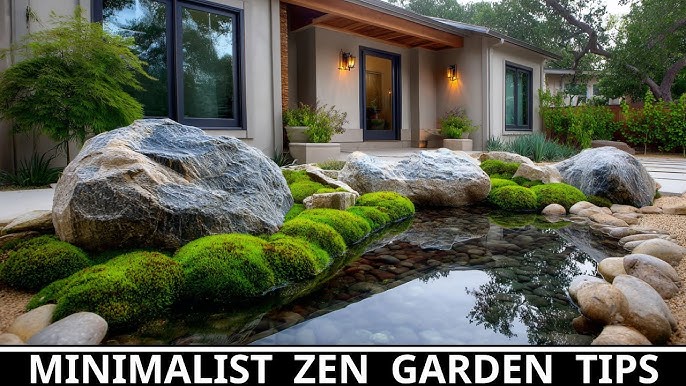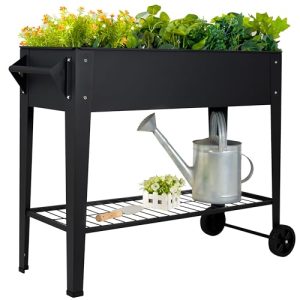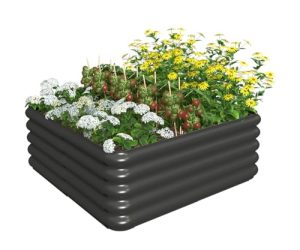Imagine stepping into your backyard and being greeted by a serene oasis, where lush greenery and moss-covered rocks create a tranquil escape from the hustle and bustle of daily life. A moss rock garden can transform your outdoor space into a peaceful retreat, inviting you to unwind and connect with nature.
But how do you design such a magical garden? You’ll discover simple yet effective techniques to craft your own moss rock garden, tailored to your style and space. We’ll guide you through the process, from selecting the perfect rocks to choosing the right moss varieties that will thrive in your environment.
As you read on, you’ll unlock the secrets to creating a garden that’s not only visually stunning but also soothing to the soul. Are you ready to turn your garden dreams into reality? Dive in and learn how to create a moss rock garden that will captivate and inspire you every day.
Choosing The Right Location
Selecting the perfect spot for your moss rock garden is essential. Ensure it’s a shaded area with consistent moisture and minimal foot traffic. This helps moss thrive and maintain its lush appearance.
Choosing the right location for your moss rock garden is crucial. The location affects its growth, appearance, and maintenance. Carefully consider various factors to create a thriving garden space.Understanding Sunlight Requirements
Moss thrives in shaded areas. Direct sunlight can dry it out quickly. Choose a spot with dappled sunlight or full shade. This ensures moss retains moisture and stays healthy.Checking Soil Conditions
Moss prefers acidic soil. Test your soil’s pH to ensure it’s below 6. If needed, amend the soil to create the right conditions. This will help moss anchor and spread effectively.Evaluating Moisture Levels
Consistent moisture is key. Select a location with natural moisture, like near a water source. High humidity areas also support moss growth well. Avoid dry, arid spots.Considering Surrounding Vegetation
Ensure nearby plants do not overshadow the moss garden. Trees and shrubs can provide shade but avoid dense canopies. This allows the moss to receive enough indirect light.Assessing Accessibility
Choose an easily accessible location. This simplifies maintenance and allows you to enjoy the garden. Paths or stepping stones can enhance accessibility without disturbing the moss.Planning For Aesthetic Appeal
Select a location that enhances your landscape’s beauty. Consider how the moss garden integrates with existing features. This will create a harmonious and pleasing outdoor space.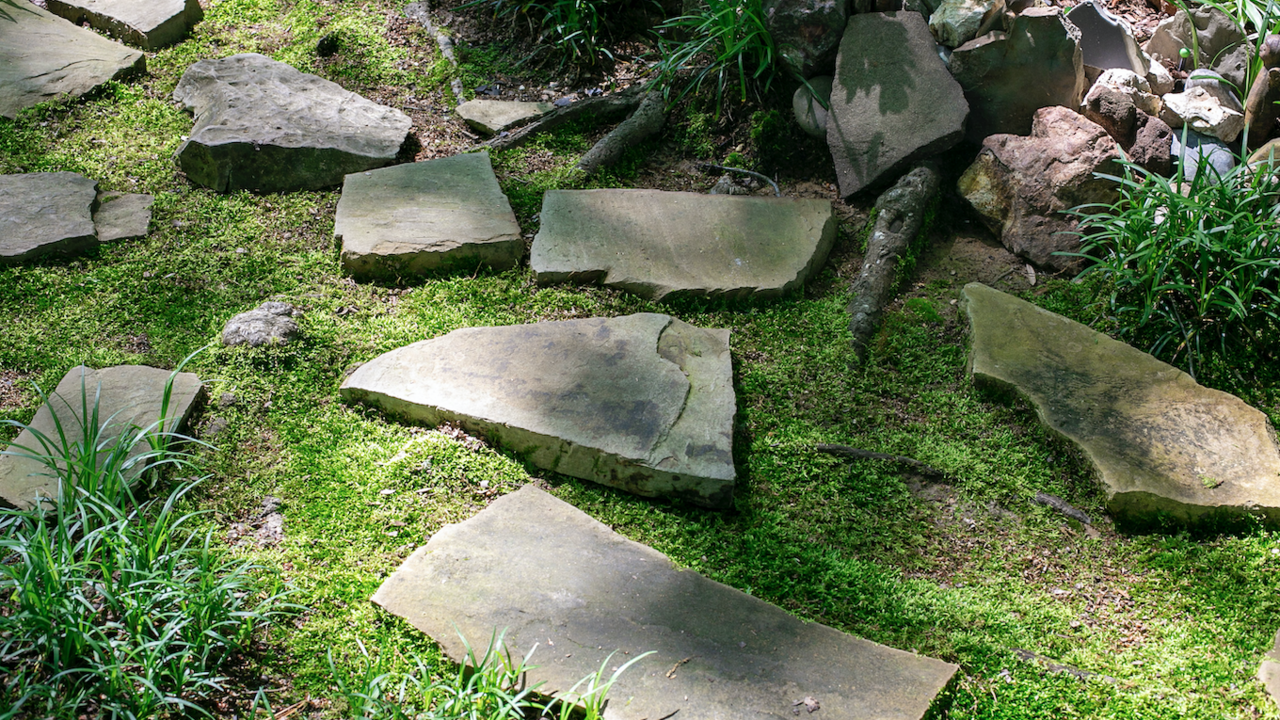
Credit: extension.msstate.edu
Selecting Moss Varieties
Designing a moss rock garden can be a delightful adventure, especially when it comes to selecting the right moss varieties. Moss, with its lush green appeal and versatile nature, can transform a rocky landscape into a tranquil oasis. But how do you choose the best moss for your garden? Understanding the types and climate requirements will guide you in making an informed decision.
Types Of Moss For Rock Gardens
Not all mosses are created equal, and some are more suited for rock gardens than others. The most popular varieties include:
- Cushion Moss:Known for its dense, pillow-like form, cushion moss is perfect for adding texture and depth.
- Sheet Moss:This type spreads quickly and covers large areas, making it ideal for a seamless green blanket over rocks.
- Fern Moss:Adds a delicate, feathery appearance, enhancing the garden’s natural beauty.
Each type brings unique characteristics to your garden. Consider how these mosses can complement your garden’s aesthetic.
Climate Considerations
The climate in your region plays a crucial role in moss selection. Moss thrives in shaded, moist environments but varies in its adaptability to different climates.
- If you live in a temperate climate, most moss varieties will flourish with minimal effort.
- In arid regions, you might need to focus on drought-resistant moss varieties like cushion moss.
- Tropical climates can support more exotic moss types, which might offer vibrant colors and unique textures.
Think about the conditions in your garden space. Is it sunny or shaded? Dry or humid? Answering these questions will help you choose moss that thrives in your specific environment.
Have you ever found yourself wishing for a quiet retreat in your backyard? By selecting the right moss varieties, you can create a serene escape right at home. The thoughtful choice of moss can transform your garden into a living masterpiece, captivating anyone who visits.
Gathering Materials
Creating a moss rock garden is a rewarding endeavor that combines natural beauty with artistic expression. However, before you can start designing, gathering the right materials is essential to ensure your garden thrives. This stage sets the foundation for your moss rock garden, making it crucial to choose wisely and prepare thoroughly.
Choosing Rocks
Selecting the perfect rocks is more than just picking random stones from your backyard. Consider the size and texture of the rocks, as they will influence both the aesthetic and the functionality of your garden. Opt for rocks that have a rough surface, as moss clings better to textured surfaces. You may also want to think about the color; darker rocks can create a striking contrast with vibrant green moss. Visit a local garden center or a landscaping supplier where you can hand-pick stones that suit your vision.
Tools And Supplies Needed
Having the right tools at your disposal can make the process of building your moss rock garden much smoother. Ensure you have a sturdy spade or shovel for digging and positioning rocks. A wheelbarrow can be invaluable for transporting heavier stones from one place to another. Additionally, a hand trowel will help you plant the moss in tight spaces between the rocks. Don’t forget to have gardening gloves to protect your hands and a spray bottle for misting the moss during its initial phase of growth.
Have you considered how you’ll handle the maintenance of your garden once it’s established? Planning for upkeep is just as important as the initial setup. Gathering the right materials now can save you time and effort in the long run, allowing your moss rock garden to flourish beautifully.
Planning The Layout
Planning the layout of a moss rock garden is crucial. It sets the foundation for a harmonious and visually pleasing space. Thoughtful planning ensures your garden blends naturally with its surroundings. A well-designed layout enhances the beauty of moss and rocks. It creates a serene atmosphere that invites relaxation.
Design Principles
Start with a clear vision for your garden. Think about the shape and size of the area. Consider the natural landscape and existing features. Balance is key in design. Use different sizes and shapes of rocks. This creates contrast and interest. Place larger rocks as focal points. Surround them with smaller rocks and moss. Maintain a natural look by avoiding symmetry.
Creating Natural Flow
A moss rock garden should mimic nature. Design a path that guides visitors through the garden. Use curved lines instead of straight ones. This encourages a gentle flow. Avoid overcrowding the space. Leave open areas for the eye to rest. This enhances the garden’s tranquility. Connect different elements harmoniously. Use moss to soften edges and gaps between rocks. This creates a seamless transition.
Preparing The Site
Create a clean slate for your moss rock garden by removing weeds and debris. Ensure the ground is level and well-drained. Incorporate natural elements to enhance the garden’s aesthetic appeal.
Designing a moss rock garden begins with careful site preparation. This step ensures your garden thrives in its environment. Moss requires specific conditions, and proper preparation helps create the ideal habitat.Soil Preparation
Start with testing the soil’s pH level. Moss prefers acidic soil, typically a pH of 5.0 to 5.5. Amend the soil with sulfur or peat moss if necessary. Remove any debris or weeds. These can hinder moss growth. Till the soil lightly to aerate it. This promotes healthy root development.Drainage Solutions
Proper drainage is crucial for a moss rock garden. Moss likes moist conditions but does not tolerate waterlogged soil. Evaluate the site for natural drainage patterns. Consider installing drainage pipes if needed. Create gentle slopes to guide water away. This prevents pooling and promotes moisture balance.Planting Moss
Moss brings a serene, lush look to rock gardens. Planting moss is an art that requires patience and the right techniques. It adds a natural green carpet, enhancing the beauty of your garden. The process begins with understanding the best ways to transplant moss and encourage its growth.
Moss Transplanting Techniques
Transplanting moss is simple. First, choose healthy moss from a similar environment. Use a trowel to gently lift the moss patch. It’s essential not to damage the root structure. Once lifted, transport it to your garden. Prepare the area by clearing debris and ensuring a slightly acidic pH. Place the moss on the ground, pressing it gently to secure contact with the surface. Water it lightly to help it settle.
Encouraging Growth
Watering is crucial for moss to grow well. It needs consistent moisture but avoid overwatering. Mist the moss regularly, especially during dry spells. Shade is beneficial for moss. Consider placing your garden where sunlight is filtered. Fertilizers aren’t necessary, but maintaining a clean area helps. Remove any fallen leaves or weeds. Ensure the soil remains slightly acidic. This fosters healthy moss growth.
Maintaining The Garden
Designing a moss rock garden offers a serene and natural look. Begin with selecting shaded areas for moss growth. Arrange rocks of various sizes to create depth and interest.
Maintaining a moss rock garden requires thoughtful care. This ensures the lush greenery and natural beauty thrive year-round. Proper maintenance keeps the garden healthy and vibrant. A well-maintained garden offers a peaceful retreat and visual delight.Watering Tips
Moss needs moisture to thrive. Water your moss rock garden regularly. Use a gentle spray to avoid disturbing the moss. Early morning watering is ideal. This allows the moss to absorb moisture before the sun gets too hot. Avoid overwatering. Excess water can lead to mold growth. Monitor the weather. Adjust your watering schedule during rainy or dry periods.Pest Control
Moss gardens are mostly pest-free. Yet, some pests might occasionally appear. Keep an eye out for slugs and snails. These pests can damage your moss. Remove them manually if spotted. Introduce natural predators like birds to control pests. Keep the garden clean. Remove debris that attracts pests. Use organic pest control methods to protect the environment. Chemical pesticides can harm the moss and surrounding plants. Regular inspection helps maintain a healthy garden.Enhancing With Additional Features
Enhancing with additional features can make your moss rock garden stand out. Incorporate pathways, water features, or seating areas. These elements add beauty and functionality, creating a serene space.
Enhancing your moss rock garden with additional features brings it to life. Adding unique elements creates a more dynamic and serene environment. These enhancements can transform your garden into a peaceful retreat.Incorporating Water Elements
Water adds tranquility and movement to your garden. Consider a small pond or a bubbling fountain. These elements create soothing sounds and attract wildlife. A simple birdbath can be a lovely touch. Water enhances the natural beauty of moss and rocks. Ensure proper drainage to avoid waterlogging. Position water features strategically for optimal viewing.Adding Decorative Accents
Decorative accents personalize your moss rock garden. Use sculptures or statues to add character. Select pieces that complement the natural theme. Lanterns and wind chimes introduce charm and whimsy. Pathways made of stones or wood guide visitors through the garden. Incorporate benches or seating areas for relaxation. Choose materials that blend well with moss and rocks.Seasonal Care
Designing a moss rock garden is an art that requires not just creativity but also thoughtful care throughout the seasons. Each season brings its own challenges and beauty, influencing how you maintain your moss garden. Whether you’re dealing with the frost of winter or the revitalizing warmth of spring, understanding seasonal care can make all the difference in keeping your moss garden vibrant and healthy year-round.
Winterizing Your Moss Garden
Winter can be harsh, but it doesn’t have to mean the end for your moss garden. With a few simple steps, you can protect your moss from the cold and ensure it remains lush come spring.
- Insulate with leaves:Adding a layer of fallen leaves can help insulate your moss against frost. This natural blanket retains moisture and warmth.
- Avoid heavy snow:Gently brush off heavy snow from your moss to prevent damage. Excess weight can crush and uproot delicate moss patches.
- Monitor moisture:While moss thrives in moisture, be cautious of too much water which can freeze and damage your moss. A light misting during dry spells can be beneficial.
Have you ever noticed how nature tends to protect itself? Mimic this by providing a natural barrier to protect your moss garden during winter.
Spring Revival Tips
Spring is a time of renewal, and your moss garden is no exception. As temperatures rise, it’s time to breathe new life into your garden with a few rejuvenating techniques.
- Clear debris:Remove any leftover leaves or branches from winter. Clearing debris allows sunlight and moisture to reach the moss, encouraging growth.
- Rehydrate:Spring rains help revive your moss, but if the season starts dry, ensure regular misting to maintain moisture levels.
- Check for gaps:Inspect your moss for any bare patches and fill them with new moss to ensure an even, lush appearance.
Have you ever felt the joy of seeing your garden come back to life after a long winter? Spring is the perfect time to rekindle that connection with nature and see your moss thrive.

Credit: www.youtube.com
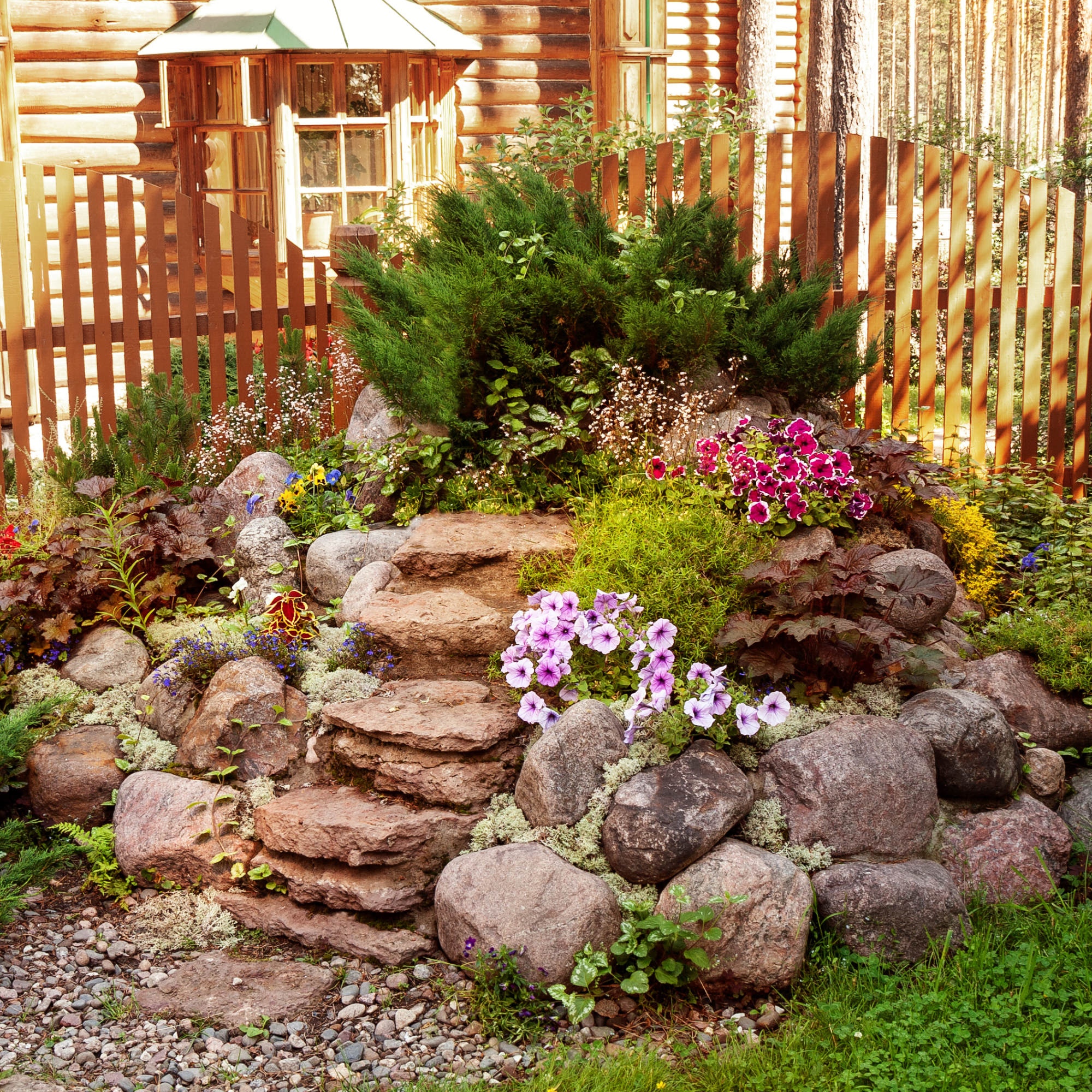
Credit: www.gardeningknowhow.com
Frequently Asked Questions
What Is A Moss Rock Garden?
A moss rock garden is a landscape design featuring rocks and moss. It mimics natural environments where moss thrives on rocks, creating serene, green spaces. Moss rock gardens are low-maintenance, eco-friendly, and bring a peaceful ambiance to any outdoor area.
How Do You Start A Moss Rock Garden?
Start by selecting a shaded, damp area with adequate drainage. Choose rocks of varying sizes and arrange them naturally. Introduce moss by planting spores or using moss-covered rocks. Regularly mist the moss and ensure the garden receives indirect sunlight.
What Type Of Moss Is Best For Rock Gardens?
Sheet moss is often preferred for rock gardens due to its adaptability. It grows well on rocks and retains moisture effectively. Fern moss and cushion moss are also good options, providing different textures and appearances.
How Do You Care For A Moss Rock Garden?
Maintain moisture by regularly misting the moss, especially in dry periods. Remove any fallen debris to prevent mold growth. Check for adequate drainage to avoid waterlogging. Ensure the garden gets indirect sunlight and protect it from harsh weather.
Conclusion
Creating a moss rock garden is simple and rewarding. Start with choosing the right rocks. Arrange them naturally. Add moss for a soft touch. Water regularly to keep moss healthy. Enjoy the peaceful vibe in your garden. The design can be small or big.
It depends on your space and style. A moss rock garden brings nature close. It’s an escape from daily stress. With patience, your garden will thrive. Feel proud of your unique creation. Share its beauty with friends and family. Relax and enjoy your green sanctuary.
